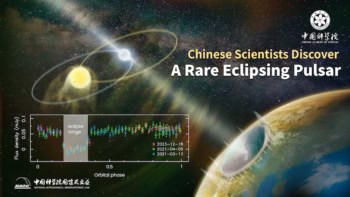
Astronomers have struggled to understand how the largest stars — up to 120 times as massive as the Sun — can form by sucking in nearby matter. The problem is that, once a star reaches about 20 solar masses, the outward force of its intense radiation exceeds the gravitational force that pulls in matter. But researchers in California have used a computer simulation to show that structures in the bubbles of gas that protrude from a massive star can channel material to larger stars, allowing them to continue growing.
Stars form within dense clouds of dust and gas located in the interstellar medium of a galaxy. Gravity causes these clouds to collapse in on themselves, with small disturbances within a cloud causing denser clumps of matter to form. These clumps will themselves continue to collapse, until the pressure created inside the ever hotter gas increases enough to counteract gravity. At this point each clump will become a spherical protostar.
Astronomers know that a protostar can grow up to around 20 solar masses by accreting material from the surrounding gas cloud. In doing so, it creates an “accretion disk” around itself — the conservation of angular momentum dictating that the rotational speed of the shrinking cloud will increase to the point where the gas enters into orbit around the young star. The temperature inside the growing star, if it is large enough, will then increase to the point where nuclear fusion reactions occur.
Enormous outward pressure
However, applying the same logic to larger stars (formed from larger gas clouds) has been problematic, because the enormous outward pressure of the thermal radiation created as the star heats up should blow away a dusty cloud of gas trying to accrete onto it. Researchers have come up with a number of alternatives to accretion in order to explain the existence of the most massive stars, but each has had its own problems. For example, the idea that massive stars might form through the collision of smaller stars now seems implausible because there doesn’t appear to be a high-enough density of low mass stars to generate such collisions.
Now, however, Mark Krumholz of the University of California, Santa Cruz, and colleagues, have shown that radiation pressure should not halt accretion. To do this they carried out a three-dimensional computer simulation of massive star formation using their ORION programme (Sciencexpress.org). This involved modelling a gas cloud of 100 solar masses and then watching it evolve over the equivalent of several tens of thousands of years. They found that a central protostar formed after 3600 years and that the star continued to accrete material unimpeded by radiation pressure for 20,000 years after that.
It was at this point that the simulated star became large enough for its radiation pressure force to exceed its gravitational force. Because the radiation is hottest closest to the star, gas nearer the star feels a greater push than gas further away. Gas from further away therefore falls towards the star but piles up where the pressure is greatest, causing it to form two bubbles of gas (on opposite sides of the star) with only radiation inside.
Krumholz’s team found that these bubbles become clumpy, meaning that in some places radiation blows out sections of the bubble wall, whereas in other places dense filaments of gas form though the bubble, allowing gas to be transported to the star.
Smaller stars also formed
The team also discovered that gravitational instabilities in the disk meant that not all of the gas accreted onto the original star. They found that a number of smaller stars formed within the disk, most of which were consumed by the main star, but that on the 35,000-year mark a few of these smaller objects clumped together to form a second star that resisted assimilation. Another 20,000 model years later, after little change in the system, the researchers halted the simulation and found that the two stars had masses of 41.5 and 29.2 solar masses. This compares with an upper limit of 22.9 solar masses formed in previous two-dimensional simulations.
Krumholz says that had he and his colleagues continued to run the simulation, it is likely that much of the remaining gas in the disk would have increased the masses of the stars still further. Indeed, he says that his group’s simulation provides no evidence for a stellar mass limit. But he points out that observations suggest an upper limit of between 120 and 150 solar masses, speculating that beyond this point either the stars or the disks that feed them become violently unstable, preventing any further growth. “I don’t know if this could explain the observed limits,” he adds, “but I can say with some confidence that radiation pressure is not the mechanism responsible for setting these limits.”



